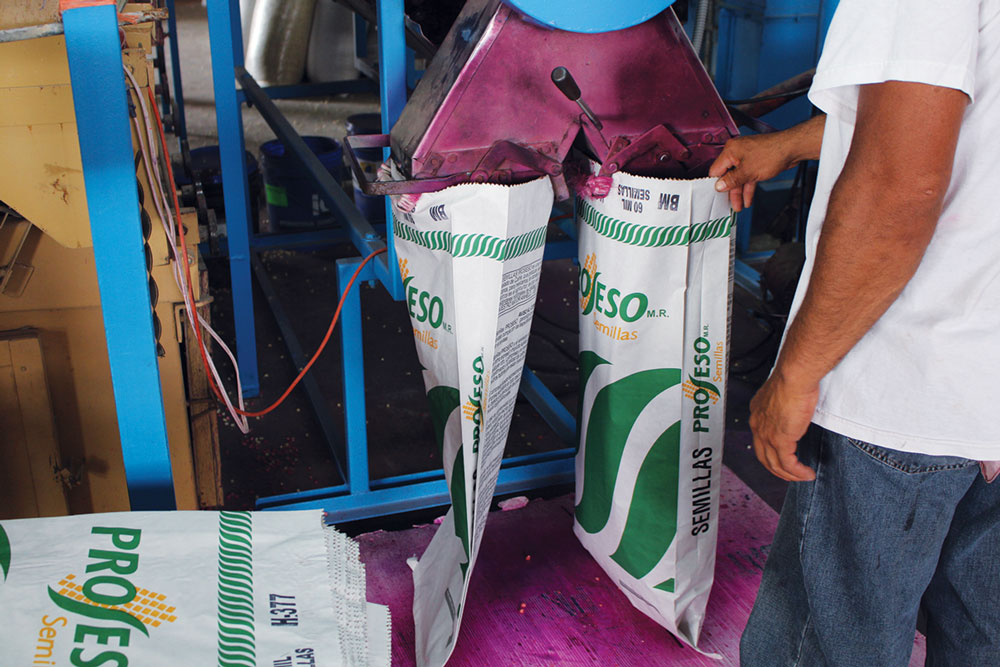October 17, 2016
Farmers’ ready access to affordable, improved maize seed underpins increased productivity for maize food and feed worldwide. In regions like sub-Saharan Africa and Mexico, maize, the predominant food staple, is grown solely on rainfall by smallholder farmers, making access to affordable, drought tolerant seed all the more critical to food security. Building on decades of partnerships with seed producers and successful research to create drought tolerant maize, CIMMYT is fostering more effective maize seed production and, increasingly, delivery systems in these regions, working to make resilient, high-yielding maize the preferred choice for seed companies and farmers. This means new maize varieties that not only yield well but also make good business sense.
Sub-Saharan Africa: drought tolerant maize is driving seed demand
Both the main food staple and income generator in sub-Saharan Africa, occupying more than half the cereal production area in more than half the region’s countries, maize is grown mainly on small farms by millions of families far from markets, with few financial resources and a high aversion to risk. Since the mid-1990s CIMMYT, with IITA and national partners in sub-Saharan Africa, has led the development and release of more than 200 drought tolerant varieties already benefiting over 5 million households on more than 2.5 million hectares annually.
With half of Africa’s maize area routinely affected by drought, the challenge to reach more farmers is huge.
“We’re focusing on incentives across the maize value chain – market potential for producers, business opportunities for seed distributors, yield potential for farmers – coupled with a new emphasis on the informal sector, where so much seed and seed information comes from,” said Kate Fehlenberg, manager of the CIMMYT-led Drought Tolerant Maize for Africa Seed Scaling (DTMASS) project. “We’re doing this with targeted and tailored business information for each type of partner and bringing in new and more private sector experts in seed market analysis, communications and media, to make sure progress will continue.”

Maize seeds are bagged at a local seed company in Latin America.
Mexico: Rocking the cradle of maize
Home of the farmers who over several millennia domesticated maize from a wild grass, Mexico’s maize lands are dominated by age-old, low-input, low-yield maize cropping systems where farmers use saved seed of local or heirloom varieties. Fewer than half of Mexico’s maize farmers have access to improved seed. Through a major, joint initiative known as the Sustainable Modernization of Traditional Agriculture (MasAgro) project, CIMMYT and seed companies are targeting areas where maize agriculture is or can be more profitable, and particularly where hybrid maize may be of interest, according to Arturo Silva Hinojosa, leader of the CIMMYT-led International Maize Improvement Consortium (IMIC), Latin America division, which is part of MasAgro. “MasAgro has involved 57 small and mid-sized Mexican seed companies,” said Silva. “These partners were able to increase sales by an annual average of 10 percent over 2011-15, as a result of MasAgro’s capacitybuilding and maize breeding efforts.”
In 2015, 48 companies produced a combined output of 1.2 million 60-kilogram bags of hybrid maize. The companies offered 26 drought tolerant hybrids adapted to Mexico’s main rain-fed maize production regions. “The improved seed was sold under 100 commercial names in 19 states, 78 regions and 257 municipalities,” Silva explained. “As one result, the market share of drought tolerant maize increased by 44 percent in Mexico in 2015.”
The hybrids yield at least as much as the best commercial hybrids often marketed at a higher price, according to Silva. “More importantly, they are resilient to heat and drought, or resistant to pests and prevalent diseases, making them ideal for smallholder farmers and global food security.”
“We’re focusing on incentives across the maize value chain – market potential for producers, business opportunities for seed distributors, yield potential for farmers…” – Kate Fehlenberg Manager, CIMMYT-led DTMASS project

Mohamoud Ahmed Mohamoud of IFFA Seeds Limited proudlyt showing off his drought tolerant seed on a demo plot in Tanzania.
The development and dissemination of drought tolerant maize in Africa is funded by the Bill & Melinda Gates Foundation (BMGF), the United States Agency for International Development (USAID), the Norway Development Fund (DF) and CGIAR Fund Donors listed on p. 45. Funding for the International Maize Improvement Consortium (IMIC) comes from the Mexican Secretariat of Agriculture, Livestock, Rural Development, Fisheries and Food (SAGARPA).